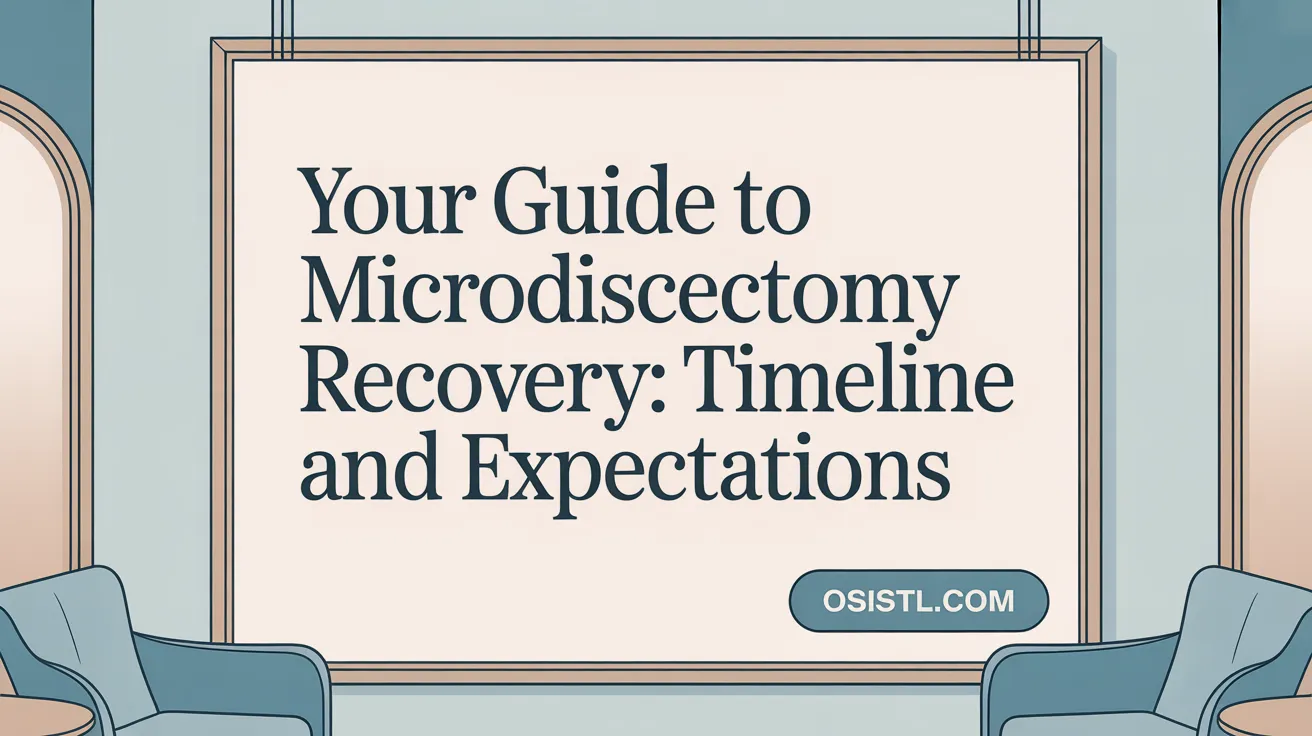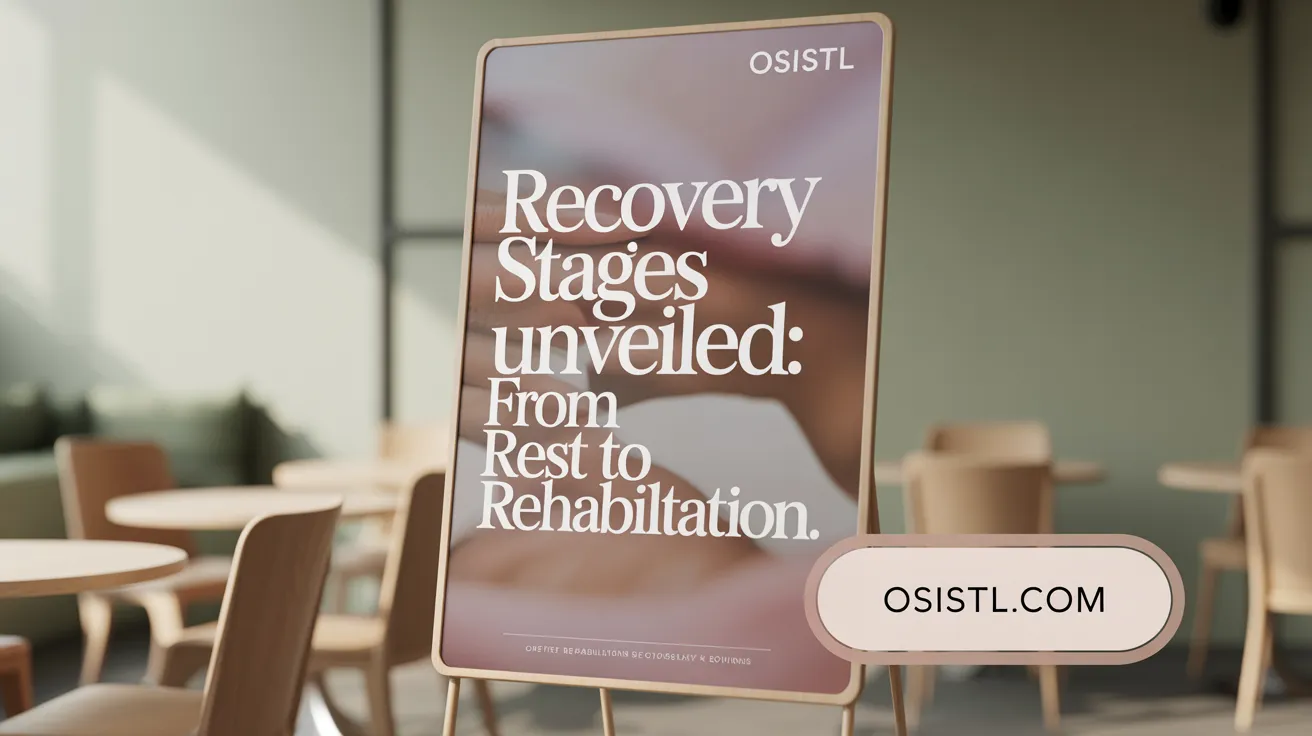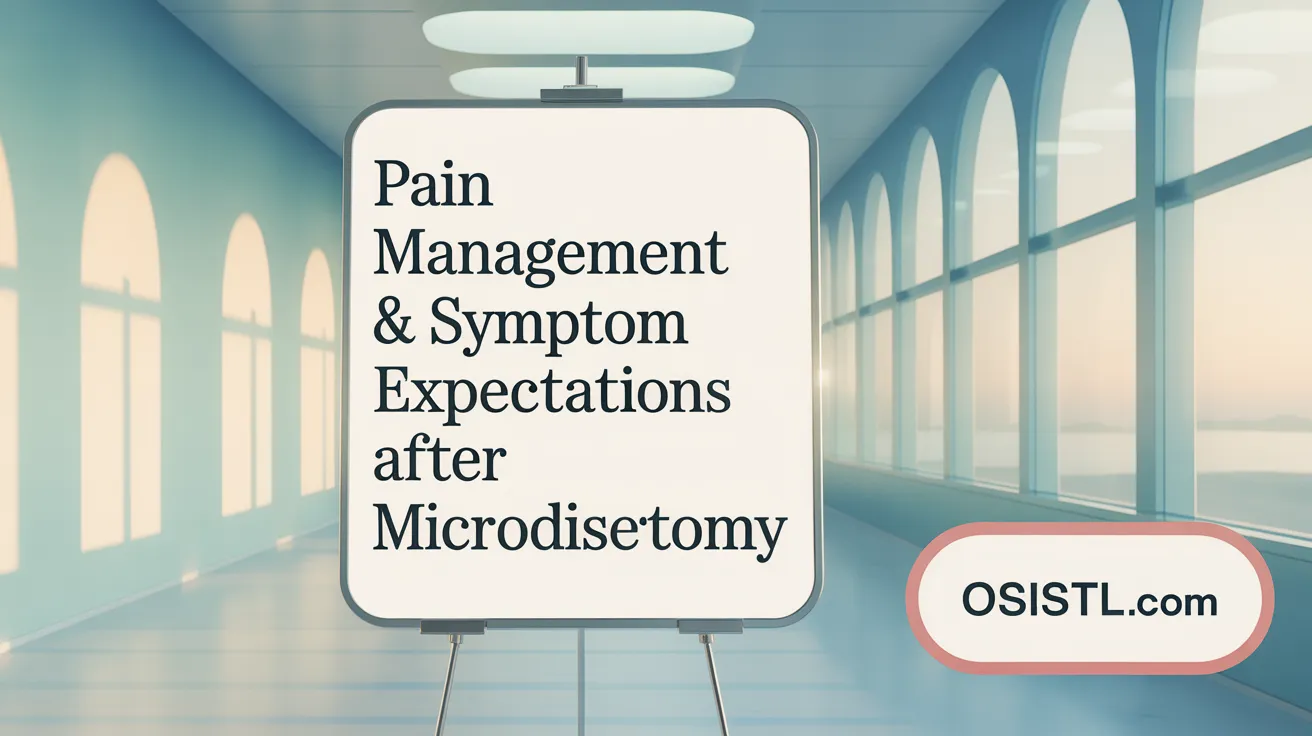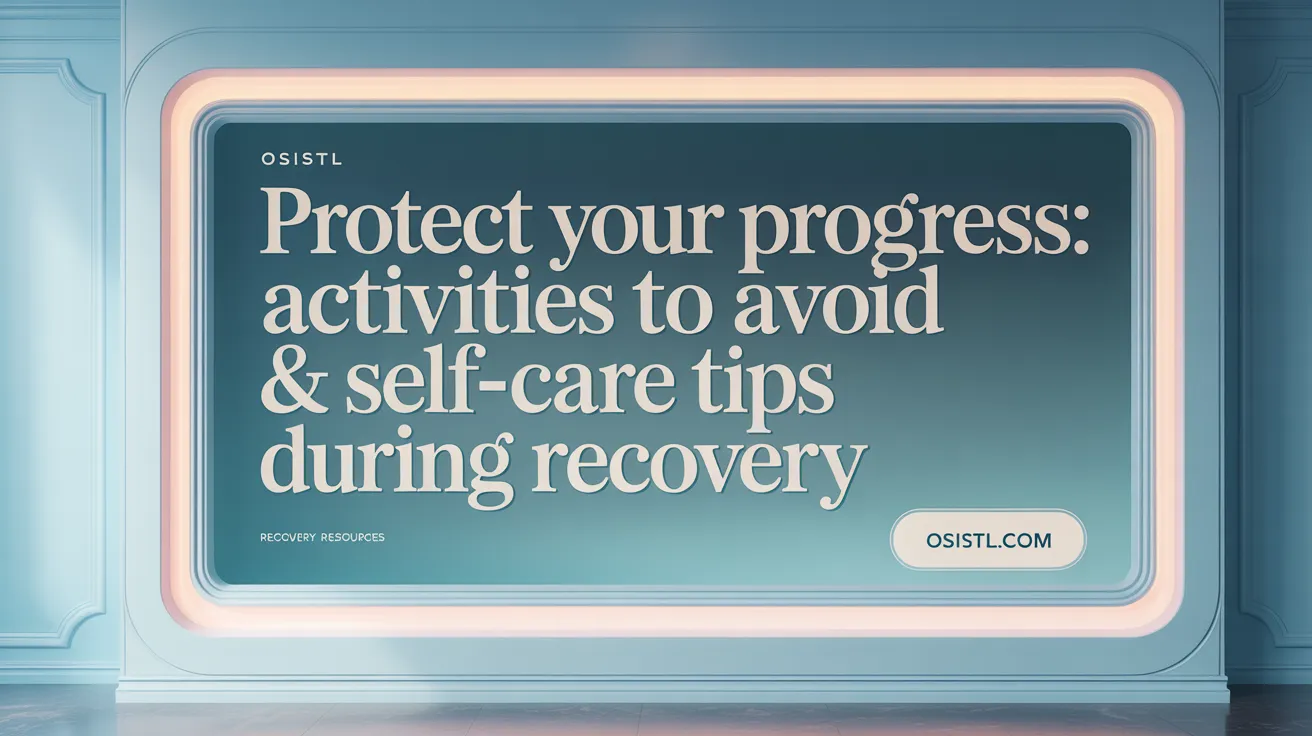A Closer Look at What to Expect Following Microdiscectomy
Microdiscectomy surgery offers relief for those suffering from nerve pain due to herniated discs in the lower spine. Understanding the recovery timeline, stages, postoperative care, and factors affecting healing can empower patients to navigate the journey ahead with confidence. This article provides a comprehensive guide to experiencing a successful recovery and returning to normal activities safely and effectively.
Typical Recovery Timeline: From Surgery to Resuming Activities

What is the typical recovery timeline after microdiscectomy surgery?
Recovery from microdiscectomy surgery usually spans several weeks, with most patients noticing substantial improvement within 4 to 6 weeks. During this period, initial symptoms such as back soreness and leg pain tend to decrease as healing progresses. The early days involve managing pain, avoiding strenuous activities, and gradually increasing mobility. Full recovery can vary based on individual factors like age, overall health, and how complex the surgery was.
Patients are often encouraged to walk regularly as it helps stimulate blood flow and reduce stiffness. By around four to six weeks, many individuals can confidently engage in light daily activities such as walking longer distances or light household chores. Physical therapy may be introduced gradually to strengthen back muscles and improve flexibility.
When can patients generally return to normal activities following microdiscectomy surgery?
Most individuals are able to resume light activities, including short walks and basic household tasks, within 2 to 4 weeks after surgery. However, a return to full, normal activities—such as exercise, sports, or heavy lifting—often requires a longer period of about 6 weeks or more. This timeline depends on the patient’s progress and adherence to activity restrictions.
By around three months, many patients are able to safely return to most everyday routines, including sports and recreational activities, provided their recovery is proceeding well and they've received clearance from their healthcare provider.
Following these general timelines, it’s important to listen to your body and consult with your surgeon before resuming any strenuous or high-impact activities. Proper post-surgery care for microdiscectomy patients including physical therapy and gradual activity resumption, plays a crucial role in achieving a successful recovery and returning to normal life.
Phases of Recovery After Microdiscectomy Surgery
 Recovery after microdiscectomy generally occurs in several clear stages, each with specific goals and typical timeframes. Initially, in the first few days after surgery, the focus is on rest, pain control, and gentle movement. Patients often stay in a recovery area for a few hours before heading home, and managing pain with prescribed medications is essential (post-microdiscectomy pain management, pain management post-microdiscectomy, managing pain after lumbar microdiscectomy).
Recovery after microdiscectomy generally occurs in several clear stages, each with specific goals and typical timeframes. Initially, in the first few days after surgery, the focus is on rest, pain control, and gentle movement. Patients often stay in a recovery area for a few hours before heading home, and managing pain with prescribed medications is essential (post-microdiscectomy pain management, pain management post-microdiscectomy, managing pain after lumbar microdiscectomy).
The early recovery phase lasts up to about six weeks. During this period, patients gradually increase their activity levels, beginning with short walks and light activities such as household chores. Walking is highly encouraged to boost blood flow and promote healing, while activities that involve heavy lifting, bending, or twisting should be avoided (walking benefits post-microdiscectomy, activity restrictions after lumbar microdiscectomy, postoperative care for lumbar microdiscectomy). Many patients start working with a physiotherapist during this stage to strengthen back muscles and improve flexibility (physical therapy after microdiscectomy, physiotherapy and spinal muscle strengthening).
After the six-week mark, attention shifts to the rehabilitation phase. This involves more structured physical therapy focused on restoring full mobility, core stability, and strength. Patients can typically resume low-impact sports and recreational activities with caution by this stage. The aim is to gradually return to normal life, with higher-impact activities and strenuous work permitted after around 8 to 12 weeks, depending on individual progress (microdiscectomy recovery milestones, returning to work after microdiscectomy, returning to sports after microdiscectomy).
Most individuals find that their recovery from microdiscectomy involves these progressive stages: initial rest, gradual mobilization, and targeted rehabilitation to regain strength and function. Following medical advice and participating in physiotherapy are vital for a successful and safe recovery (microdiscectomy recovery guidelines, post-surgery care for microdiscectomy patients).
Postoperative Care: Guidelines for a Safe and Effective Recovery
 After a microdiscectomy, adhering to proper postoperative care instructions is crucial for a smooth and successful recovery. Patients should follow their surgeon’s specific guidelines, which typically include maintaining incision hygiene, managing pain, and limiting certain activities.
After a microdiscectomy, adhering to proper postoperative care instructions is crucial for a smooth and successful recovery. Patients should follow their surgeon’s specific guidelines, which typically include maintaining incision hygiene, managing pain, and limiting certain activities.
In the early days following surgery, it is important to keep the surgical site clean and dry. Patients are usually advised to leave the surgical tape or dressing on for about a week, then gently wash the area with soap and water, and avoid soaking in baths or pools to prevent infection (post-microdiscectomy incision care).
Activity restrictions are a major part of postoperative care. Generally, patients are advised to avoid heavy lifting (over 10 pounds), bending, twisting, and strenuous exercises for at least six weeks. Early activity such as walking is encouraged to stimulate circulation and promote healing, with the aim to gradually increase duration and intensity over time (walking benefits post-microdiscectomy).
Driving can often be resumed around two weeks post-surgery, provided the patient feels comfortable and is not on medication that impairs driving (driving after lumbar microdiscectomy). Most patients are able to return to work within six weeks, depending on the nature of their job and individual recovery progress (returning to work after microdiscectomy).
Pain management should be guided by the surgeon’s prescriptions. Medications are typically taken for a short period, and over-the-counter options can be used if necessary. Proper medication use helps relieve pain, reduce inflammation, and facilitate mobility (post-microdiscectomy pain management).
Attending scheduled follow-up appointments allows healthcare providers to monitor healing, remove sutures or staples if necessary, and address any signs of complications early on. Patients should contact their doctors if they experience increased pain, wound redness or swelling, fever, numbness, weakness, or loss of bladder or bowel control (signs of complications after microdiscectomy).
Good posture, safe lifting practices, and engaging in physiotherapy or prescribed exercises at appropriate times are beneficial for long-term spinal health (physical therapy after microdiscectomy). Practicing these guidelines helps minimize the risk of recurrent injury and supports a full recovery time after microdiscectomy.
Managing Pain and Recognizing Symptom Expectations
 After microdiscectomy surgery, managing pain effectively is an important part of recovery. Patients are usually prescribed pain medications, including narcotics or over-the-counter options, to control discomfort. It is essential to follow the surgeon’s directions on medication use and dosage. Anti-inflammatory drugs may also be recommended to reduce swelling around the surgical site.
After microdiscectomy surgery, managing pain effectively is an important part of recovery. Patients are usually prescribed pain medications, including narcotics or over-the-counter options, to control discomfort. It is essential to follow the surgeon’s directions on medication use and dosage. Anti-inflammatory drugs may also be recommended to reduce swelling around the surgical site.
Patients can expect some degree of soreness, swelling, or numbness in the days immediately following surgery. These postoperative symptoms to expect are normal and tend to improve gradually over a few weeks. In addition to medications, applying heat packs can help alleviate stiffness and muscle soreness, but they should not be used directly on the incision.
It is common to experience a reduction in leg pain or numbness, sometimes immediately after surgery, and other times over the course of days or weeks. Following activity restrictions after microdiscectomy and gradually increasing mobility aids in symptom improvement. Patients should monitor their symptoms closely and contact healthcare providers if pain worsens, or if signs of infection or neurological deficits such as weakness or loss of bladder control emerge.
By understanding what to expect after microdiscectomy surgery and adhering to post-surgery care for microdiscectomy patients instructions, patients can support a smooth recovery process. For more strategies on pain management after microdiscectomy, searching “pain management after microdiscectomy surgery” can provide additional guidance and practical tips.
Activities to Avoid and Self-Care Tips During Recovery

Which activities should be avoided during recovery from microdiscectomy surgery?
During recovery, patients should steer clear of heavy lifting, bending, twisting, and strenuous activities that put stress on the spine. High-impact exercises such as running, jumping, or weightlifting are also discouraged initially. Prolonged sitting or standing can cause back strain and slow healing, so it’s recommended to take regular breaks and change positions frequently. Engaging in contact sports or any activity that risks falling or injury should be postponed until fully cleared by a doctor. These precautions help prevent re-injury and promote proper healing.
What are some effective self-care tips during the recovery process after microdiscectomy?
Self-care during recovery involves following all medical advice, such as taking prescribed pain medications responsibly and attending physiotherapy sessions. Keeping the incision area clean and dry is essential; usually, this means leaving tape on for about a week and washing the area with soap and water without soaking. It’s helpful to pace daily activities—gradually increasing movement while avoiding overexertion—to avoid setbacks.
Engaging in gentle walking and mobility exercises as recommended can boost circulation and healing. Maintaining a healthy diet rich in nutrients supports tissue repair, while staying well-hydrated helps reduce inflammation. Adequate rest is critical, as it allows the body to recover effectively. By listening to your body and avoiding activities that cause pain or discomfort, you facilitate a smoother recovery process. Always follow your healthcare provider’s instructions to ensure the best possible outcome.
Rehabilitation: Strengthening and Returning to Function
Rehabilitation following microdiscectomy plays a vital role in ensuring a safe and effective return to daily activities and sports. Generally, the process begins within the first two weeks after surgery. During this early period, patients are encouraged to focus on gentle walking and mobility exercises to promote blood flow and reduce swelling. Pain management and incision care are integral parts of initial recovery.
For the first 4 to 6 weeks, activity restrictions are common, although recent research suggests that limiting certain activities for just about two weeks may be sufficient for many individuals. Patients should avoid heavy lifting, twisting, and bending during this time. Instead, physical therapy typically involves exercises to strengthen core muscles, improve flexibility, and regain spinal stability.
The structured program progresses gradually over the subsequent weeks, incorporating low-impact cardiovascular exercises such as swimming, cycling, or elliptical training, along with functional movements that replicate everyday activities. These phases typically extend through 6 to 12 weeks, tailored to individual recovery speed and medical advice.
Most patients are able to resume light work, including desk jobs, within 2 to 6 weeks. Driving may be resumed around this period as well, provided the patient feels comfortable and is able to control the vehicle safely. More demanding physical activities and contact sports are usually delayed until after the 12-week mark to prevent re-injury.
Complete recovery—where patients can return to their pre-surgery level of activity, including high-impact sports—generally takes about 6 to 12 weeks. Throughout this process, adherence to a personalized physical therapy program, cautious activity escalation, and regular follow-up with healthcare providers are essential.
In summary, a steadily progressive approach to rehabilitation, emphasizing strength, flexibility, and functional movements, enables most patients to regain full back function while minimizing the risk of setbacks.
Factors Influencing Recovery Duration and Warning Signs for Complications
What factors influence the duration and success of recovery after microdiscectomy?
Several elements can impact how quickly and effectively a patient recovers from microdiscectomy. Age is a significant factor; younger patients tend to heal faster than older individuals. Overall health plays a crucial role—patients in good health with no underlying conditions generally recover more swiftly. The severity of the herniated disc and any nerve compression can also influence recovery time.
The specific surgical technique used, whether minimally invasive microdiscectomy procedure or traditional, can affect healing speed and success rate. Adherence to postoperative guidelines including activity restrictions and physical therapy greatly improves outcomes. Participation in prescribed rehabilitation exercises helps strengthen the back muscles and restore flexibility, reducing the risk of re-injury.
Lifestyle choices are also important. Smoking has been shown to delay healing and prolong recovery. Similarly, managing other health issues like diabetes can enhance the healing process. Proper incision care and avoiding excessive activity early on are essential for a smooth recovery. For detailed guidance on post-surgery care for microdiscectomy patients, refer to expert resources.
What signs of complications should be watched for during the recovery period after microdiscectomy surgery?
During recovery, patients need to be vigilant for certain warning indicators that suggest complications. These include increasing or severe pain at the incision site, which could indicate infection or inflammation.
Swelling, redness, or pus from the wound are signs of wound infection and require prompt medical attention. Fever over 101°F (38.5°C) is another typical sign of infection that warrants immediate evaluation.
Patients should also be alert for neurological symptoms such as worsening weakness, numbness, or tingling in the legs or feet, which could signal nerve issues. Difficulty controlling bladder or bowel functions is a serious warning sign, indicating possible nerve damage or cauda equina syndrome.
Signs of blood clots, such as swelling, warmth, or pain in the legs, should be treated promptly. Any sudden chest pain or difficulty breathing also requires urgent care.
Prolonged or worsening symptoms should prompt contact with healthcare providers. Recognizing these signs early can prevent severe complications and facilitate appropriate treatment. For comprehensive details on signs of complications after microdiscectomy surgery, please consult specialized health sources.
Ensuring a Successful Recovery Post-Microdiscectomy
Recovering from microdiscectomy surgery is a multi-stage process that requires patience, adherence to medical advice, and active participation in rehabilitation. By understanding the typical recovery timeline, phases of healing, postoperative care, and activities to avoid, patients can significantly enhance their outcomes. Timely recognition of complications and addressing influencing factors further support a smooth recovery. Engaging in prescribed physical therapy and maintaining self-care habits are key to returning to normal life with improved function and reduced pain.
